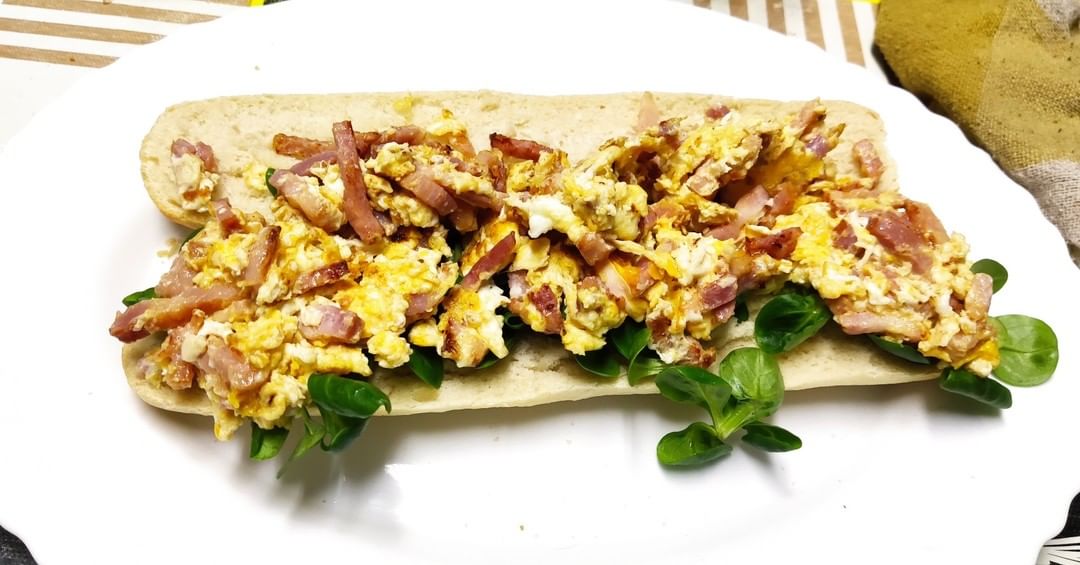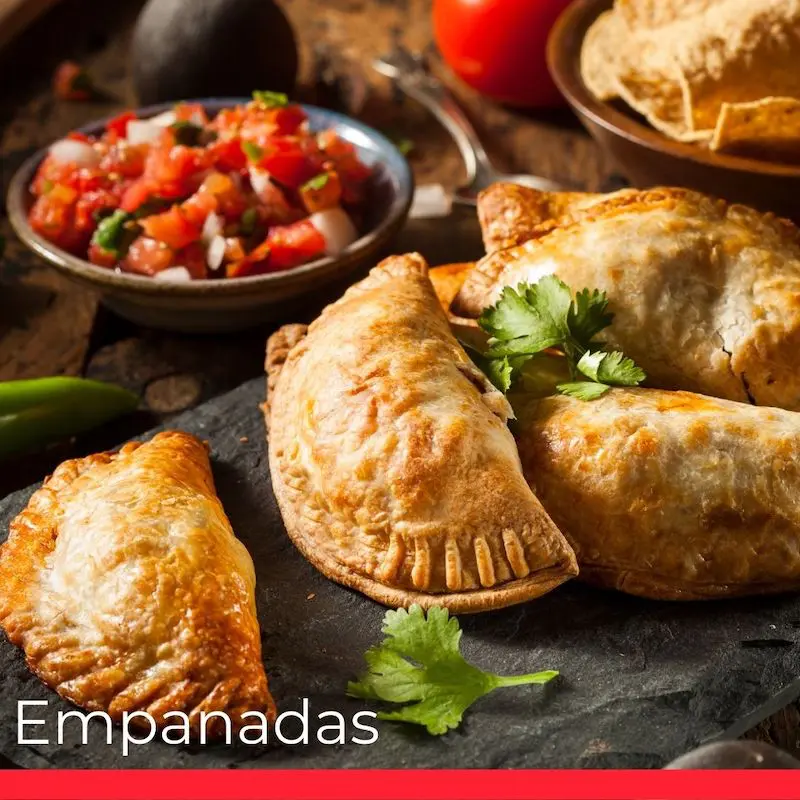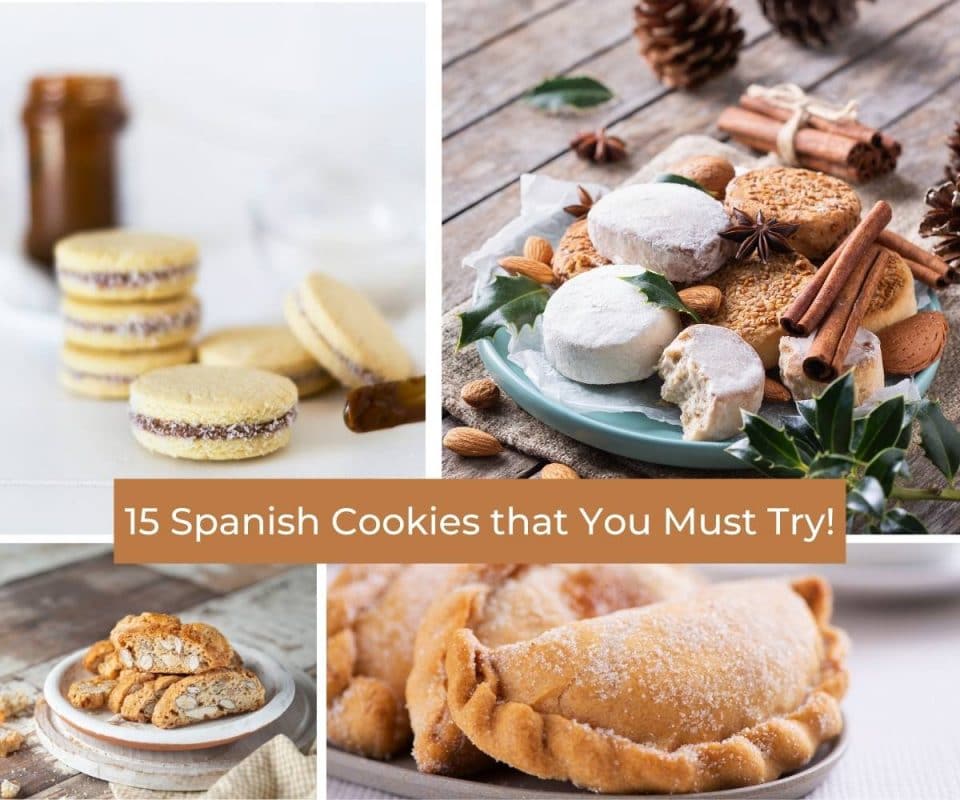Spanish food is famous the world over. Packed with fresh and flavorful ingredients, lunch and dinner dishes represent the best of Mediterranean cooking. But with lunch typically eaten around 3pm and dinner taken late in the evening, a snack between 5 and 7pm is a great way to bridge the gap.
Are we talking tapas here? Many people assume that tapas are snack foods, but this isn’t strictly true. While a tapa plate can be consumed as a snack, it is actually a selection of foods that, taken together, constitute a meal.
We’ve listed 20 of the most popular Spanish snacks to introduce them to you. If you know of a must-try snack that we haven’t included, share your tip with our community. We love hearing from you!
1. Fuet

This thin, dry-cured Spanish sausage, which resembles salami, is made from pork belly. It isn’t that well-known outside Spain, but the natives love it! It’s seasoned very simply with white pepper, salt, fresh garlic, and white wine.
In the classic recipe, no paprika is added. This is thought to be because it originated before Columbus and other explorers introduced to Spain the peppers they’d discovered on their travels.
Modern fuet often includes paprika, though.
Making it at home can be complicated, so most people buy their fuet from supermarkets or specialty shops. Enjoy it with crusty bread and perhaps a glass of beer or wine on the side.
2. Bocadillo o Bocata de Huevos Revueltos

We’ll be talking more about bocadillos later, but this version deserves its own mention. A layer of fresh scrambled eggs are placed between two slices of Spanish baguette (barra de pan) sliced lengthwise.
To add interest, some bacon can be included, with the bread fried in the juices. Alternatively, slices of cheese and perhaps some spinach or arugula can be added to the filling for an even more juicy and delicious snack.
3. Empanadas

Empanadas are small, crescent-shaped pastries stuffed with savory fillings.
They are believed to have originated in Galicia, where the filling snack sustained those working in the fields all day. They’re quite easy to make at home and they freeze well, so you can save time by making a large batch in advance. Here, we’ve linked to a beef recipe, but you can fill them with whatever you choose.
You’ll find a wide range of tasty fillings, from spicy meats to creamy fish or chicken, or cheese and vegetables. They are the perfect tasty snack to buy and eat on the go.
4. Pinchos Gilda

Pinchos Gilda is named after the ultimate Hollywood siren of the 1940s and 1950s – Rita Haywood.
A variation on the traditional Spanish pinchos, which originated from San Sebastian in the Basque Country, they combine pitted green manzanilla olives with anchovies and small, hot peppers – typically pickled guindillas or pepperoncini.
To make Pinchos Gilda, simply skewer an olive, a rolled anchovy filet, a pepper, and another olive onto a toothpick, then serve.
Traditionally accompanied with an ice-cold beer, a glass of white wine, or dry vermouth.
5. Pan Tumaca

Fancy a Spanish-style snack that only takes minutes to make at home? Then give pan con tumaca a try.
First, toast some fresh crusty bread – sourdough (pa de pagès) is perfect here. Next, rub the bread with some fresh, ripe vine tomatoes or homemade tomato sauce, and drizzle on some cold-pressed extra-virgin olive oil. As with all Spanish dishes, use only the finest quality ingredients for the most delicious results!
Pan tumaca is popular as a breakfast snack, as a tapa, and for merienda.
The classic Catalan version, which dates back to the 19th century when it was invented as a way to avoid wasting stale bread, is known as pa amb tomàquet. Dark rye bread is sometimes used. Both sides of the bread are rubbed with tomato before being drizzled with oil.
6. Berenjenas con Miel de Caña

This is a traditional Spanish snack from Malaga on the Costa del Sol. It consists of eggplants, flour, olive oil, salt, and molasses. Sliced eggplant is drained, coated in flour, and fried in olive oil (what else?). It’s served with a small dollop of molasses on top.
The unexpected combination is unforgettable!
7. Queso con Anchoas

Queso con anchoas is a simple bar snack of sliced Manchego cheese topped with anchovy filets.
Sometimes it’s embellished with strips of roasted red peppers. It may also be drizzled with sherry vinegar, which gives a delicious sharp contrast to the nutty flavor of the cheese and the saltiness of the anchovies.
This delicious mix of flavors and textures is typically enjoyed with a glass of wine or beer.
8. Croquetas de Bacalao

There are many variations on the basic fritter recipe, but this one is made with flaked cod. The traditional béchamel filling is replaced with well-seasoned mashed potato.
Once the pieces of dough are shaped into the required form, they’re coated in breadcrumbs and fried until crisp and golden.
9. Pincho de Pimentos del Piquillo Rellenos de Atún

A pincho (or pintxo) is a small traditional Spanish appetizer or bar snack, typically held together with a toothpick or skewer.
This particular pincho originated in the Basque Country and uses piquillo peppers from Lodosa in Navarra, which are stuffed with tuna. Albacore tuna, or bonito del norte from the Bay of Biscay, is usually chosen for its rich flavor, juicy texture, and light color.
The tuna can be combined with diced shallots, mayonnaise, extra-virgin olive oil, some drops of lemon juice, and pepper.
10. Buñuelos

Since their invention in Spain, these fried, crispy, golden fritters have become popular in many countries. These simple treats have a rich and fascinating history. They are believed to have been first created by the Sephardic Jews who lived in Spain and are still a popular Hanukkah snack in the Spanish Jewish community.
In the Christian communities in Spain and Latin America, they’re typically eaten on All Saints Day and during the Christmas period.
These tasty snacks are crispy on the outside and meltingly soft on the inside. A basic dough of milk, eggs, butter, and flour is shaped into balls and deep-fried. They’re flavored with flaked salt cod, as well as fresh parsley, spring onions, vinegar, lemon juice, paprika or curcumin (turmeric), as well as salt and pepper.
11. Almendras Fritas

What the Spanish refer to as frutas secas (dried fruits), are, in fact, nuts. All kinds of nuts are grown everywhere in Spain, but almonds are perhaps the most popular.
This sweet and crunchy snack is a simple combination of Marcona almonds, olive oil, and salt. The nuts are gently baked in the oven until pale gold. They are then covered in salt and fried in olive oil until they’re crispy.
You’ll often find them served at parties or as a light snack (perhaps with an aperitif) before lunch or dinner
12. Bocadillos/Bocatas

OK, sandwiches are not uniquely Spanish, but the bocadillo or bocata is a typically Spanish twist on the international classic.
In Spain, you won’t find them made with anemic white sliced bread. Bocadillos are 10cm wedges of crusty barra de pan, cut in half, often rubbed with olive oil or ripe tomato, and filled with, well, you name it!
Serrano ham is one of the most popular fillings, but cheese, sausage, lomo (pork tenderloin), or chicken are all used as are sliced eggs, tomatoes, peppers, olives, and anchovies!
Bocadillos are the perfect satisfying snack when you’re on the go, for picnics, day-long hikes, or the kid’s school lunch box.
Grown-ups accompany their bocadillos with coffee, beer, wine, or cava!
13. Patatas Bravas

Patatas bravas is a traditional tapas snack made with diced potatoes covered in a tomato sauce spiced with onions, garlic, chili powder, and paprika. This tasty mix is served in bars all over Spain, especially as a late-night snack.
You’ll typically find it topped with garlic sauce (aioli) on top, but other options such as chorizo slices or fried fish are also served in some locations.
14. Mojama

Mojama is a Spanish delicacy of cured tuna. Traditionally it’s wind-dried for at least three weeks until the meat shrinks and darkens to a reddish-brown color.
It’s typically served as an appetizer or a snack. You may also find it in salads or partnered with anchovies, bread, and olives – much to the horror of purists who insist that combining anything other than olive oil to the filets distracts from the mojama’s unique and distinctive flavor.
15. Croquetas de Jamón

Croquetas de jamon are another type of Spanish fritter. They have a crisp outer shell and a creamy interior. The center consists mainly of a thick, buttery béchamel and diced Spanish ham, which adds taste and texture. They’re formed into log shapes, rolled in breadcrumbs, coated in egg wash, then fried until golden.
16. Chips de Alcachofa

A plate of chips de alcahofa is a popular Spanish snack that’s typically served as a tapa or appetizer. The chips are made from small Spanish artichokes. The hearts are sliced and fried in olive oil until golden. When ready, they’re drained, sprinkled with salt, and eaten while still hot.
In Spain, you’ll find fresh artichokes are in season throughout the winter, and they’re used in all sorts of dishes.
17. Torrijas

So far, we’ve looked at savory snacks. But sometimes, a little something sweet is exactly what’s needed between meals.
Torrijas is the Spanish twist on the internationally-loved French toast. Slices of leftover bread are soaked in milk, washed in beaten egg, then fried.
In the past, torrijas were served to the mothers of newborns, as well as injured soldiers as it’s rich and nourishing. These days, it’s served around Easter time, with cinnamon and honey to give it a melting sweetness.
18. Horchata con Fartons

A famous specialty of Valencia, horchata (or orxata) con fartons is a distinctive local alternative to milk and cookies.
First, the horchata. This sweet drink is served ice-cold. It’s traditionally made from locally-grown, ground tiger nuts, known as chufa. It’s served with fartons, which are bars of sweet sponge cake.
If you’re ever in Valencia, don’t miss out on this wonderful and unique local snack.
19. Paparajotes

This is a mouthwateringly sweet and unique Spanish snack from Murcia.
Paparajotes are made from young, aromatic lemon tree leaves, which are covered in a yeast batter, fried in olive oil, and sprinkled with cinnamon and sugar. The batter ingredients can vary; you may find anise and lemon zest are included.
Once fried, the leaves are held by their stems so that the sugary, crispy batter can be pulled off and enjoyed on its own. The leaves themselves are not eaten; they’re only used to give the batter its amazing citrusy zing.
20. Churros with Hot Chocolate

Churros don´t need much introduction; you can find them the world over. In Spain, they’re usually eaten for breakfast, with a small cup of rich hot chocolate. Occasionally, they’re found as an afternoon snack.
We hope that this incredible range of delicious snacks has given you a taste for exploration! Enjoy your gastronomic voyage of discovery!
21. Chicharrón

This is a super popular Spanish snack made from fried pork belly or fried pork rinds. You can find it sold in many local stores and offered as a snack in Spanish bars. It’s best paired with a cold local beer or a glass of red wine.
While chicharróns are certainly delicious, make sure you don’t overindulge as they are loaded with fats and calories.
This popular Spanish snack is also a favorite Filipino snack (called chicaron with a single r) and it’s enjoyed in many other former Spanish colonies. It has even become a must-try food in Florida where it was made popular by the large local Cuban American community.
Related: Most Popular Spanish Cheeses
Related: Most Popular Spanish Cookies
Related: Most Popular Spanish Drinks

The post 21 Irresistible Spanish Snacks You Have to Try! appeared first on Chef's Pencil.
from Chef's Pencil https://ift.tt/IJ4UdRV
via https://chefsspenncil.blogspot.com

No comments:
Post a Comment